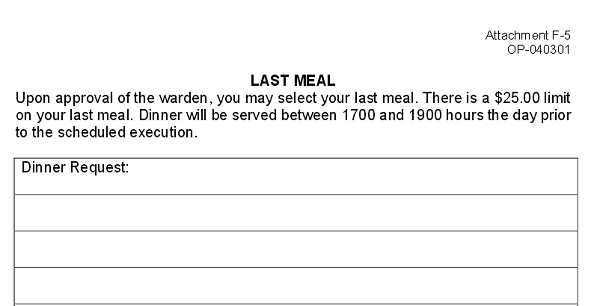There is a lot of common lore surrounding logistics of firing squads - one gun contains a blanks, executioners aim for the heart, not the head, there may be a blindfold and a cigarette. But what’s actually on the books is a bit of a mystery, and in Utah, where a shortage of lethal drugs has brought the firing squad out of retirement, no light is going to be shed on the issue anytime soon.
Utah Department of Corrections has denied a request by MuckRock for any training documents or policies regarding the use of a firing squad to execute death row inmates. They claim that the records are exempt under the state’s Government Records Access and Management Act because they contain security plans, codes, combinations, security procedures, et cetera – essentially anything that could compromise the security of the agency or its employees (or, presumably, the inmates).

In contrast, the Oklahoma Department of Corrections provides not only an overview of execution procedures, but a detailed manual available online for anyone with the right Google query. That said, the guide policy does not include procedures for death by firing squad, which would be allowed in the state only if other methods of executions - including lethal injection - were outlawed.
The macabre document, which details staffing and training procedures, also gives you a detailed look into the final month of a death row inmate. The last time anyone’s allowed to visit. The last time anyone’s allowed the call. The last meal, which in Oklahoma, must cost less than $25.

While these details may be disturbing in their banality, it is the ability to be disturbed that grounds this situation in reality. We are not afforded that same grounding in Utah.
The firing squad has a rich history in Utah. In 1977, a year after a federal moratorium on capital punishment was lifted, it became the first state to resume executions with Gary Gilmore’s death by firing squad. In fact, in the last half century, Utah is the only state to put anyone execute anyone by firing squad.
In 2004, Utah banned the firing squad, stating that the method drew undue international attention to the execution. Before then, inmates were allowed to choose between the gun or the needle - lawmakers supporting the ban considered choosing the former a “magnificent manipulation of the system to bring attention to themselves.”
Utah reauthorized death by firing squad in March as a second choice to lethal injection should the drugs for this deadly cocktail be unavailable, which is a likely possibility considering the drug’s scarcity and the unwillingness of some companies to sell them for the use of execution.
The ban was not retroactive - the latest person to be executed this way was put to death in 2010. Three death row inmates await a similar fate. But how personnel are trained and selected for their duties, and the details of how these people are allowed to spend the last days of their lives will remain in darkness as long as Utah refuses to release these procedures.
Read the full denial - which we will be appealing - on the request page, or embedded below:
Image by T Woodard via WikiMedia Commons and is licensed under CC BY-SA 2.0




